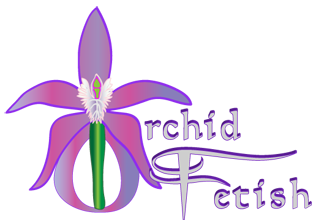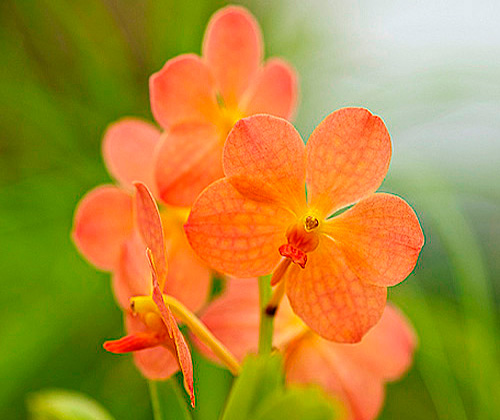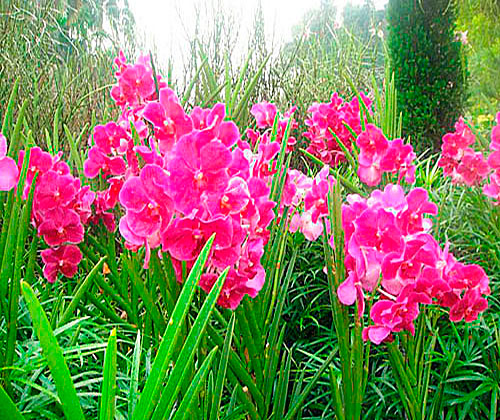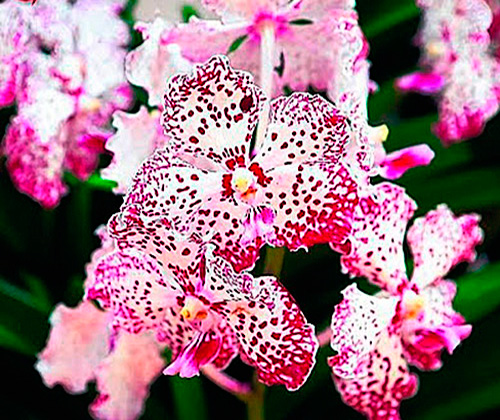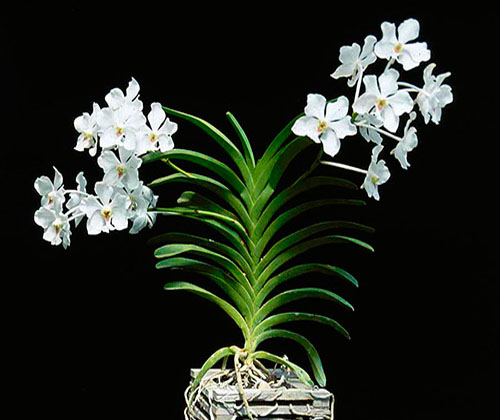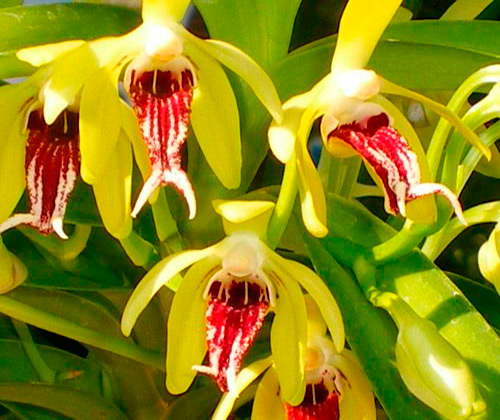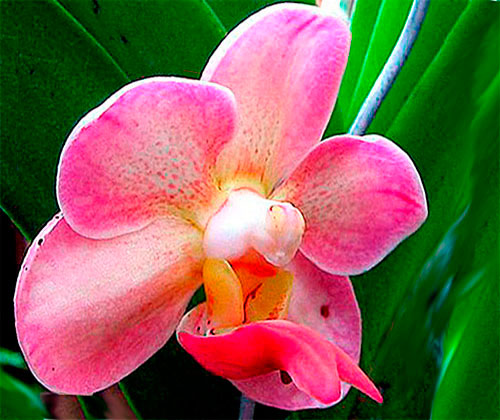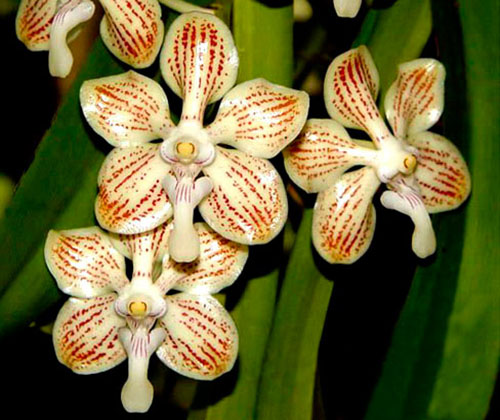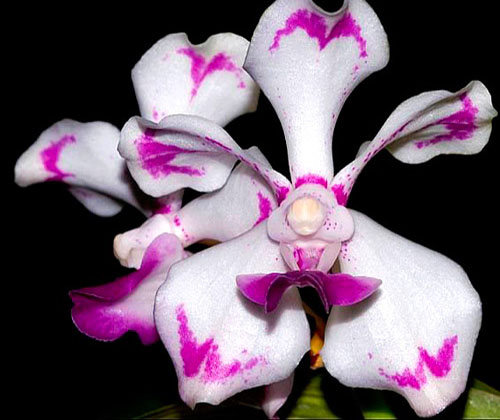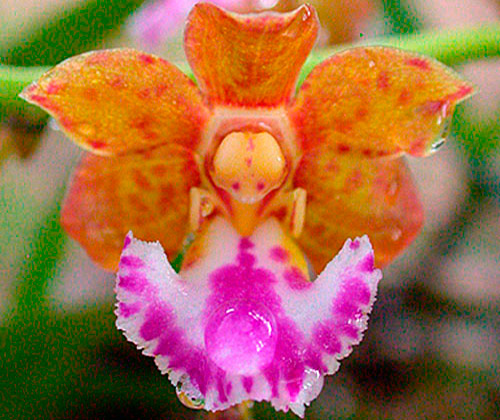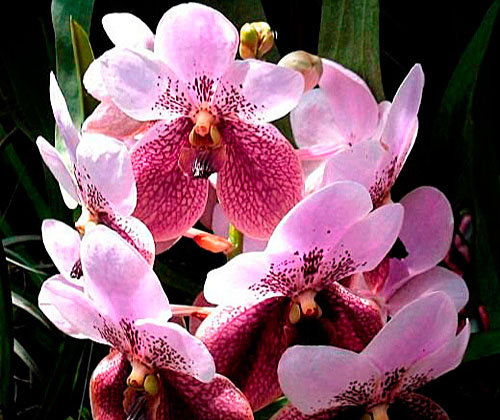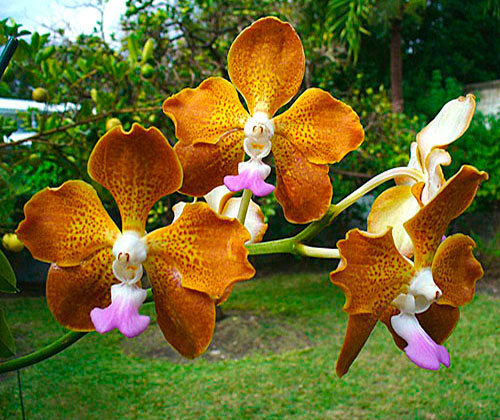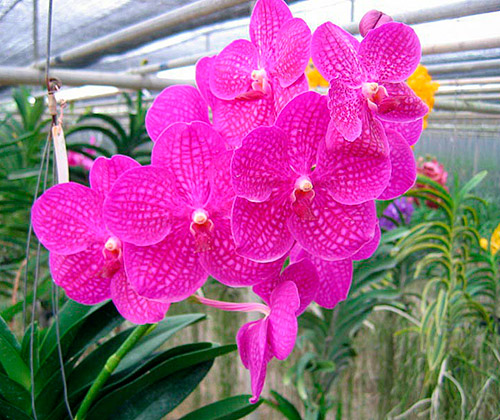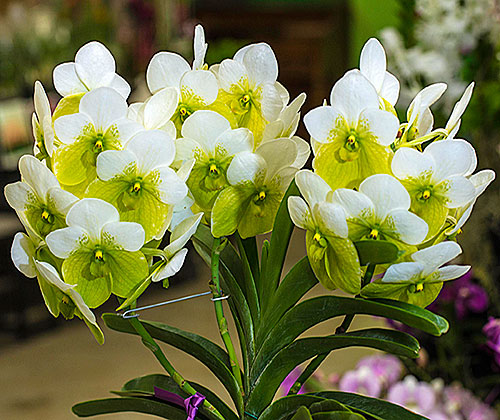Vanda Orchid
Vanda is one of many genera in the orchid family Orchidaceae. All vandaceous orchids are monopodials. Monopodial orchids have a single stem and growing point at the tip, or crown, of the plant. They are generally upright in habit, and the main stem may have lateral buds which can develop into plantlets (“keikis”) when the plant has attained sufficient size and strength to support them. Each keiki will also continue to grow indefinitely from its tip. The name Vanda is derived from the classical Indian language Sanskrit. Wild vanda orchids grow in northern Australia and Eastern Asia, including India, Indonesia, the Philippines, New Guinea, southern China and the Himalaya region. The showy bloom from one Vanda spike can sometimes last up to eight weeks or more, and this is naturally a highly desirable trait in the floral industry. Vandas will bloom throughout the year, depending on their growing conditions, with plenty of access to light, warmth and moisture.
Vandas bloom from spikes that emerge in a predictable pattern from between leaves. The flower spikes have multiple flowers, depending on the plant, and the flowers will stay open for a matter of weeks. Vandas are generally chosen for their blooms, with flowers in hot pink, red, blue, purple, or mottled. The choicest flowers are flat and round, with very bright colors. Ascocendas are a more compact version of a Vanda with substantially smaller flowers. The culture requirements for Ascocendas are the same as for Vandas.
Light
Vandas thrive on sunlight and should be suspended from the greenhouse roof and positioned as close to the glass as possible, or hanging in maximum bright conditions. Vandas can take full sun but prefer the light to be dispersed so as not to burn the evergreen foliage which surrounds the central stem. Face the vandas so that the flat side faces the light. In other words the leaves should point perpendicular to the light.
In the living room Vandas should be kept in the brightest window available and should be moved to other rooms as the seasons change to obtain the maximum light possible.
Temperature
Vandas are warm-house orchids that prefer temperatures above about 65˚F. They can tolerate colder temperatures, but prolonged exposure any temperatures below 50˚F can cause delayed flowering for up to a year. The only real exception to this is the Vanda coerulea, one of the few true blue orchids. These Vandas can handle cold temperatures better than many of their cousins.
Water & Humidity
Vandas are occasionally grown in plastic pots with sphagnum moss and orchid media, but this is a far-from-ideal situation. Instead, most growers prefer to grow Vandas in slotted baskets, where their roots are free to dangle toward the ground. Plants grown like this require a great deal of water. In periods of high temperatures, Vandas should be watered twice a day. When watering a Vanda, first soak the plant until the white or silvery roots turn color. Then wait a few minutes before again saturating the plant. Overall, the plant should be under spray for up to 8 minutes. Some growers leave their sprinklers on for 20 minutes or longer, but Vanda breeders also state that Vandas cannot continue to absorb water beyond about 8 minutes. Seriously dehydrated Vandas can be floated in a bucket of water ( put the whole plant in the bucket) for a few hours to rehydrate them.
Feeding
Vandas are heavy feeders, and well-fed plants bloom better. During the growing season, fertilize with a liquid-based, weak fertilizer weekly. Plants that are grown in plastic pots can be fertilized with controlled-release fertilizer pellets in addition to the liquid-based fertilizer.
Potting
Vandas are big, robust plants that will quickly outgrow most containers. They do best in situations where their large aerial roots are allowed to meander through the air or grasp onto a substrate. They can be successfully grown mounted to trees or buildings, but the best way to grow vandas is in open baskets with no substrate. Soak the roots in water first, then just weave the roots through the basket slots and wire the stem base in place with plant wire. Large Vandas might not need repotting at all, as they will continue to grow outside the basket, so give them plenty of root space. If your Vanda needs repotting, it is best to place the old basket inside the new basket so no root damage occurs. Re-Growing Vanda Roots
Flowering
Vandas can flower at any time of year, with the heaviest flowering season is between spring and fall. Slightly cooler temperatures and bright light initiate flower spikes. Keep the mix moist when the plant initiates buds or starts flowering. If the top of the buds become glued together with a clear, honey-like substance, try misting the bulbs to dissolve this sugary secretion. They should open normally. Vanda flowers are large with thick substance, and can bloom for one to three months at a time.
